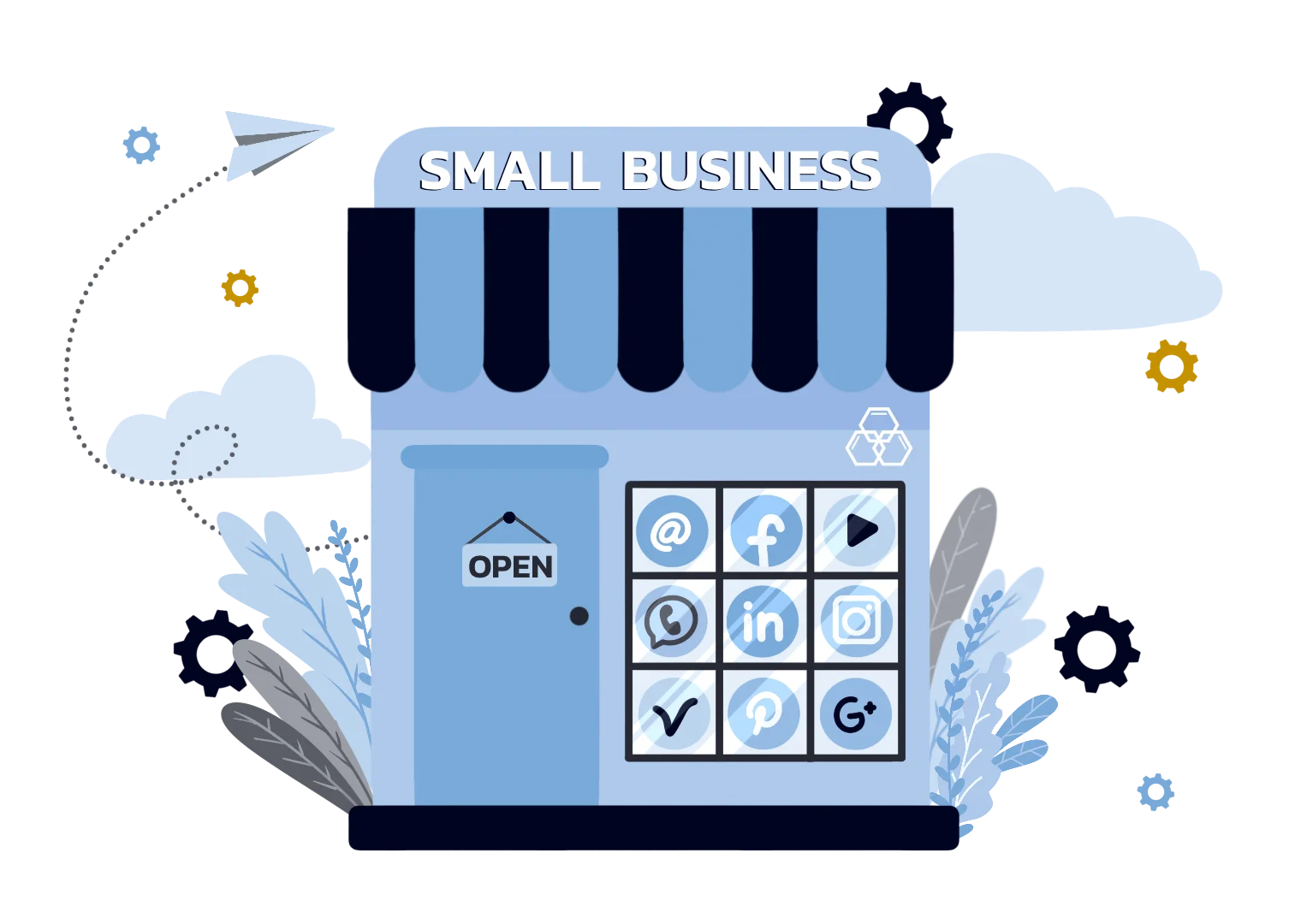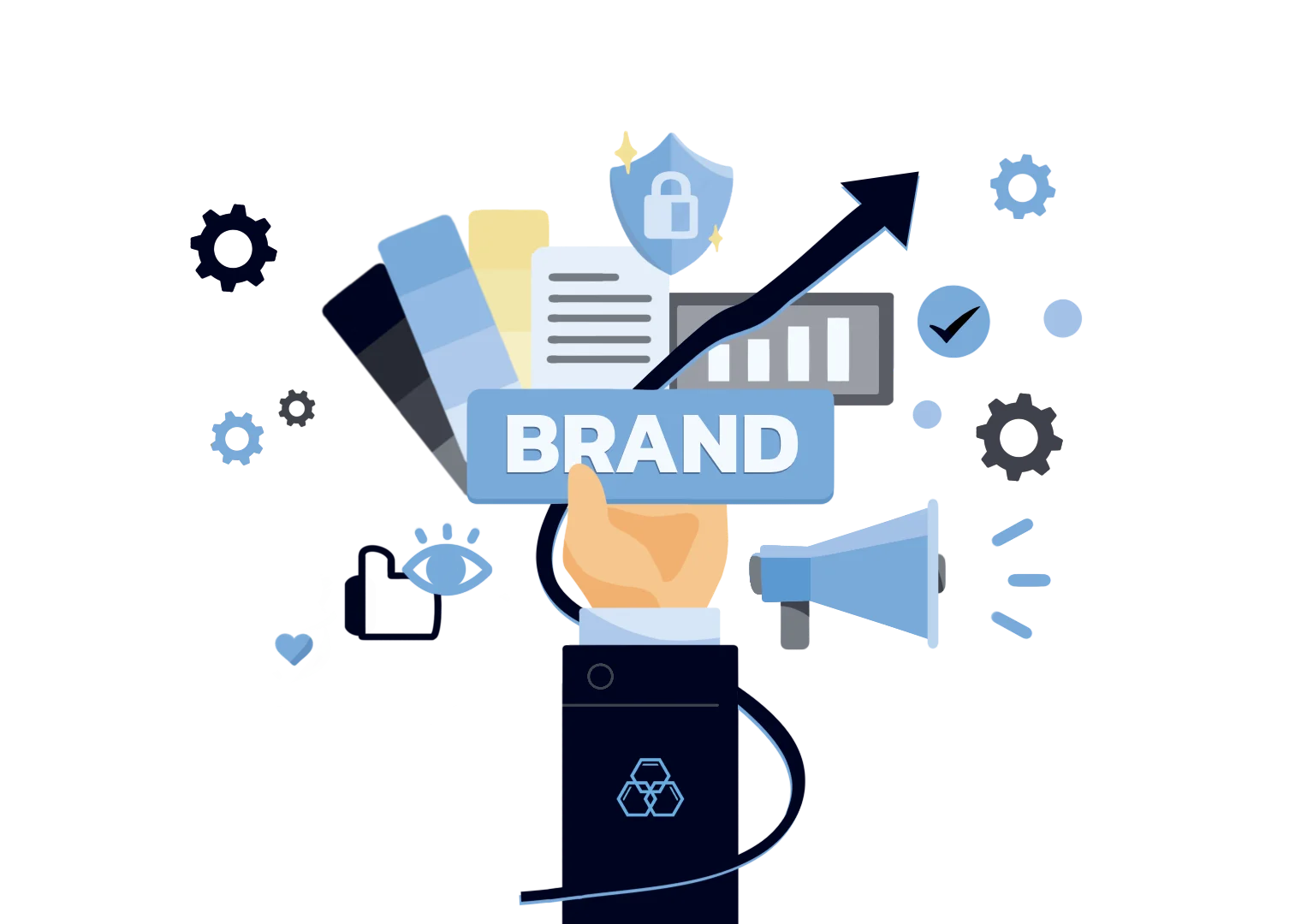Does your company have a strong brand, or is it just a well-known name? Is there any difference between your brand and your corporate image? If these questions have crossed your mind, you're not alone. In this blog, we'll break down the difference between brand and corporate image. More importantly, we'll give you the tools to build an image and a brand that resonates with your target audience.

What is Brand Image?
Your brand image is the public's perception of your company. It's the collection of thoughts, feelings, and associations people have when they think about your business. Unlike a logo or tagline, a strong brand identity is dynamic – formed by every interaction a person has with your company.
Elements of a Brand Image
- Visual Elements: Your logo, colors, typography, and overall design aesthetic.
- Messaging: Your brand voice, tagline, and how you communicate with your audience.
- Tangible Products/Services: The customer's experience with your product's quality, functionality, and reliability.
- Values: The causes your company stands for, its social responsibility initiatives, and its overall mission
- Customer Experience: How your brand interacts with and supports customers.
Sometimes brand images are often conflated with other aspects of branding. Here's how they differ from each other;
Brand Identity: The foundation you create for your brand is your mission, values, and how you want to be perceived. Brand image is how the public actually perceives you.
Brand Equity: This is the financial value of your brand. A strong, positive brand image fuels brand equity.
Brand Awareness: How familiar people are with your brand's name and basic offerings. The brand image goes beyond mere recognition to associations and feelings about the brand.
What is Corporate Image?
Corporate image refers to the public's overall perception of an entire corporation. The corporate brand identity goes beyond individual products or services and encompasses the company as a whole. It's how people see the company's reputation, social responsibility, workplace culture, financial performance, and leadership. Think of it as the company's personality as perceived by the outside world.
Elements of Corporate Image
- Workplace Environment: Employee satisfaction, ethical treatment of workers, diversity, and inclusion initiatives.
- Public Relations: How the company interacts with the media, handles crises, and its overall transparency.
- Social Responsibility: Environmental impact, charitable contributions, and community involvement.
- Financial Performance: Stability, profitability, and how it treats investors.
- Leadership: The reputation of CEOs and other top executives.
- Customer Service: Not just product-related support, but the company's overall attitude towards customers.
What Makes Brand and Corporate Image Different?
While brand and corporate image work in tandem, there are key differences to understand;

Scope
Brand Image: Connected to specific products or services. A company might have several brands, each with its distinct image.
Example: The brand personality of Nike Air Jordans is associated with athletic excellence, status, and urban style. This is different from the image of Nike's running shoes, which brand identities are center around innovation, performance, and support.
Corporate Image: Reflects the company as a whole – its mission, how it conducts business, and how it treats stakeholders.
Example: Nike's corporate image includes its commitment to sustainability. This broader image impacts how consumers perceive all its products, even if a specific item wasn't made with recycled materials.

Target Audience
Brand Image: Primarily targets the customers likely to purchase the specific product or service.
Example: A luxury skincare brand strategy will likely target consumers interested in high-end beauty with messaging about exclusivity and indulgence.
Corporate Image: Must consider diverse stakeholders with different priorities.
Example: Nike's company culture needs to resonate with investors interested in profitability, employees seeking fair labor practices, and a public concerned about environmental impact and social justice.

Focus
Brand Image: Evokes feelings and associations to drive connection and purchase decisions.
Example: Coca-Cola's visual identity relies heavily on nostalgia, happiness, and sharing special moments.
Corporate Image: Stresses the company's values, practices, and overall impact on society.
Example: Patagonia's corporate image is deeply tied to environmental activism and sustainable production, even influencing consumer perceptions of individual garments.
Adaptability
Brand Image: More flexible and responsive to market trends.
Example: A fast-food brand could revamp its image to emphasize freshness and healthier options to reflect changing consumer preferences.
Corporate Image: Built on the foundational elements of a company, therefore slower to change.
Example: A company with a history of workplace discrimination can't erase that reputation overnight. True change requires consistent, demonstrated action over time to rebuild its corporate image.
What Makes a Strong Brand and Corporate Image?
While there's no single formula for guaranteed success, strong brands, and positive corporate images typically share some key characteristics;
- Consistency: Delivering a consistent message, visual style, and reliable customer experience builds trust and recognition across all touchpoints.
- Authenticity: Brands and corporations that align their image with genuine values and actions resonate with the public far better than those that come across as insincere.
- Differentiation: In a crowded market, standing out is crucial. A unique point of view, compelling story, and memorable branding elements help separate you from the competition and increases customer loyalty.
- Responsiveness: The ability to listen to feedback, adapt to trends, and address concerns shows customers and the broader community that the brand and corporation are invested in relationships, not just transactions.
- Focus on the Long-Term: While short-term wins matter, strong brands and positive corporate identity design are built through sustainable practices, responsible decisions, and keeping an eye on delivering value for the future.
Factors Specific to Brand Image
Emotional connection: Strong brands evoke positive feelings, even a sense of belonging in their customers.
Strong brand story: Customers connect with narratives about the company's origins and purpose.

Factors Specific to Corporate Image
Social responsibility: Demonstrating commitment to ethical practices, environmental stewardship, and positive community impact.
Transparency: Openness and honesty in business practices and communication build trust.
Guide to Creating a Strong Brand and Corporate Image
Building a positive brand and corporate image isn't about a few clever marketing tricks – it's about aligning your actions with a compelling identity that resonates with your target audience. Here's a step-by-step guide:
Step 1: Understand Your Foundation
Define your company's core values through exercises like identifying proud company moments or analyzing past setbacks to see where values were upheld or compromised. Revisit your mission statement – does every employee easily understand it, and does it inspire action towards a larger goal? Conduct a thorough SWOT(Strengths, Weaknesses, Opportunities, and Threats) analysis involving various employees to get a realistic picture of your strengths, weaknesses, opportunities, and threats.
For example, a small, family-owned restaurant might discover core values like "community," "quality ingredients," and "warm hospitality."

Step 2: Know Your Audience
Move beyond basic demographics to delve deep into your ideal customer's motivations, pain points, and values. Surveys, focus groups, and social media monitoring let you listen to customers directly and build brand loyalty. For corporate image, broaden your focus to stakeholders like investors, employees, and the media, understanding what matters most to each group.
For example, a natural beauty brand might learn their customers not only desire effective products but also prioritize ethical sourcing of ingredients.
Step 3: Develop Your Unique Identity
Craft a distinct brand identity that embodies your values and attracts your target audience. This encompasses visual aspects (logo, colors, typography) and your brand voice (the tone used in marketing and communications). Consider exploring brand archetypes to help guide your overall personality (e.g., "The Magician" for innovative tech, "The Caregiver" for a nurturing non-profit).
For example, a fitness company focused on empowerment might use bold visuals and a motivating "you can do it" brand voice.
Step 4: Create a Compelling Story
Share a narrative that sets you apart. Is there an inspiring founder's story? Highlight customer success stories to show impact or connect your company's work to a broader social or environmental cause. Make sure that the brand story is consistent in internal and external communications. Storytelling builds an emotional connection with your audience as well as a strong corporate identity.
For example, a coffee company might share the journey of a specific bean sourced from a small farm, showcasing its commitment to fair trade practices.

Step 5: Execute with Excellence
Every interaction, from customer service to the quality of your product or service, shapes your image. Ensure processes are in place for exceptional customer experiences. Invest in your employee's well-being, as satisfaction translates into how your customers are treated. Make sure that in every phases of your production creates a consistent corporate identity.
For example, an online retailer might have a generous return policy and provide personalized support, going beyond what's simply expected.
Step 6: Walk the Walk
Social responsibility is key for a positive brand and corporate identity. Choose issues that align deeply with your core values and make a genuine impact. Act ethically throughout your operations and be transparent, especially when you make mistakes.
For example, a clothing company focused on sustainability would disclose the environmental impact of its production process and partner with organizations dedicated to conservation.

Step 7: Monitor, Measure, Adapt
Regularly track brand perception through surveys and social media sentiment analysis. Gather feedback from both customers and employees to gauge satisfaction and areas for improvement. Be willing to shift your strategy based on this data while being clear with your audience about the reason behind any changes.
For example, a company noticing declining employee morale would implement new initiatives to address identified issues, improving the workplace culture and thereby impacting its wider image.
Build a Strong Brand and Corporate Image!
Building a powerful brand and positive corporate image isn't a one-time project – it's a continuous journey. The key is to start with authenticity, prioritize understanding your audience, and consistently live your values in all aspects of your business. By following the steps outlined, your company will not only attract loyal customers but also the best talent, interested investors, and the widespread respect it deserves.
If you're ready to take your company's image to the next level, let us know how Evolv can help you! We are a team of experts with experience working with various industries to build a digital brand. Equip your brand with the best team
Also, check out our blog for more insights on building a business that stands out, makes a difference, and creates a lasting legacy.







